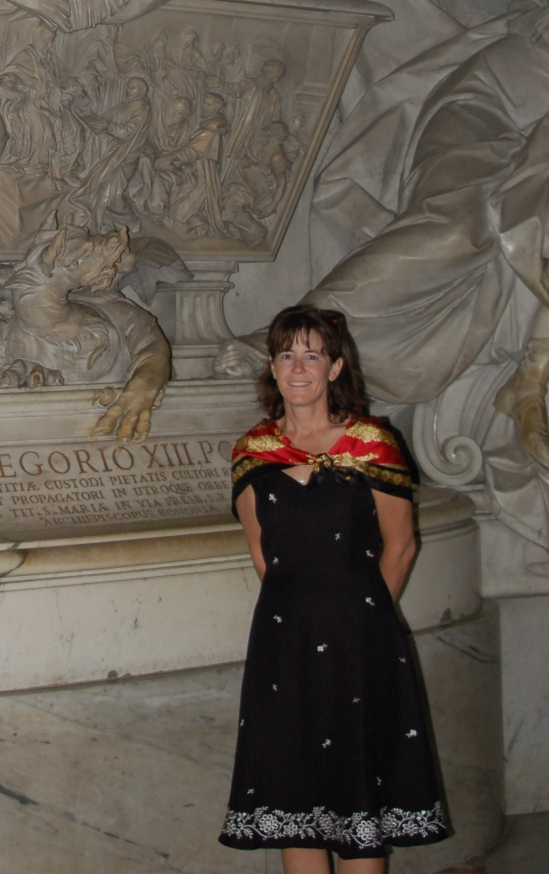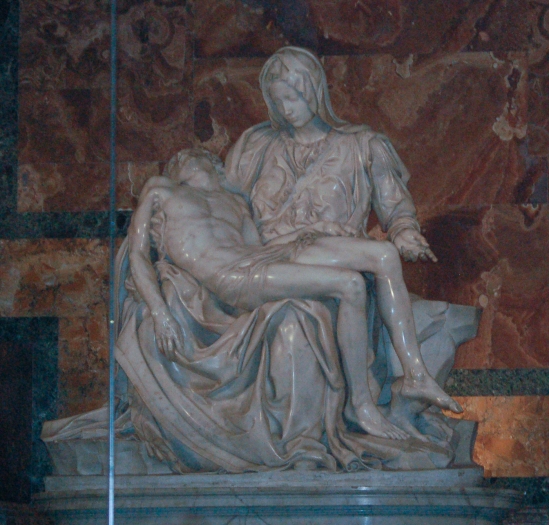As I was looking through my photos, I found myself wondering why all the ones of ancient Rome were from a distance and above. It occurred to me that I had forgotten that we went twice. The first time was an organized tour through a local company, prearranged before we arrived in Italy. I do not recommend this. It was a huge disappointment. It reminded me of the jokes you hear about seeing the Grand Canyon where you run to the edge, look out over the expanse for two minutes, then someone says, “O.K., moving on…”
In the first tour, that is exactly what they did. They drove us to the Spanish Steps where everyone got out and walked to the top where there is a view of ancient Rome from the backside. We looked over it for a few minutes, then the tour guide announced it was time to move on. Same for the Colosseum. Everyone was really ticked.
“You mean we are not going in?” Several people chimed.
The tour guide looked at his watch, then announced, “No time! Let’s go!”
That evening we were sitting in a small restaurant where the tables were very close together. A couple from Ireland at the next table heard us talking about our disappointment of the days tour, and they caught our attention, and leaned in to tell us exactly how to get an awesome tour.
“Go to the Colosseum and stand around and wait for someone to approach you and ask if you want to take a tour.”
We were a little nervous. DH said, “Is that safe?”
The Irish guy nodded. “Yes. They have a license, they can bypass the lines and they will take you everywhere.”
So, with a lot of trepidation, we went back two days later. Sure enough, within ten minutes a young guy approached us and asked us if we wanted a tour. We said yes, something we will never regret. It was amazing. He asked us to meet him in an hour while he gathered more people for the tour, and when we came back the group was ten people. Everyone paid him and we were off. We bypassed the enormous line and walked right in to the Colosseum. He took us on the ancient Rome tour after a break for lunch. That’s when I got the shots of the Colosseum from the previous post as well as the following shots of ancient Rome.




































































































